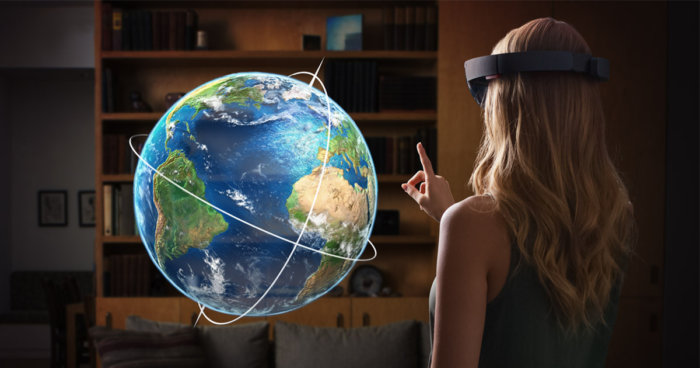Virtual reality offers opportunities to experience things otherwise impossible to perceive.
It's hard to go anywhere in cyberspace these days without bumping into a virtual world. It seems like everybody is videotaping their lives in 360°, or seeking out somebody else’s new experiment in virtual space. New media technologies have a long history of capturing public obsessions like few other legal activities. Television was a rare, alchemical sensation in the 1950s, with limited broadcast hours fully fixating anyone who owned—or desired— a television. In the mid-1970s Pong became an obsession; in the 1980s the Atari 2600 game console dominated living rooms everywhere. VHS, DVD, and then, ultimately, wireless streaming technologies burrowed so deeply into day-to-day realities that they introduced new words into the common lexicon. Even before people fully appreciate what the technologies can do, the desire to experiment with them, to try them out, mess around and claim some measure of experience and expertise becomes a mechanism for proletariat audiences to feel like they’re playing with the future.
Virtual reality in its many forms promises much of the same. To new devotees it’s exotic and familiarat the same time, a perfect means of capturing and holding attention. It's a video format that feels like it's always been ready to emerge into the light of day, inevitability with a waiting audience. It also offers profound opportunities for people to experience things in ways they might never be able to otherwise.
Some of the most compelling examples using this new technological vocabulary are coming from the avant-garde art world. Without a need to tell a linear narrative, creative producers and artists are starting to explore how this immersive technology might present artistic expressions in compelling ways. By offering a measure of decision-making to viewers, those viewers become more directly involved in what's happening. Artwork becomes not only experiential, but visceral.
In the simplest terms, a 360° video experience with or without interactive controls, offers a measure of agency on the part of viewers. Unlike traditional video presentations where images are a function of what a director or a cameraperson presents, VR offers opportunities for viewers to turn and look at something else. In this way it's not only immersive, but it's experiential. It not only adds an aspect of activity to the act of watching something in a video context, but it adds and a decision-making aspect. VR offers complicity to viewers.
This comes with challenges, naturally. The technical challenges aren't worth discussing here; there are always technical challenges for new technologies, and if they endure, new technologies work them out. They improve. The last 20 years of cell phone development presents a clear example of successful technological evolution. What's much more important here is how VR stories will be created and consumed. In the short term, the simple ability for audiences to feel like they can have new experiences in an immersive video space will supersede narrative presentations. Not everybody is equally gifted in storytelling, and by giving a measure of agency to people who watch, viewers will be more attracted to simulated experience rather than linear narratives.
Inevitably this will change. As the technology evolves, people who make the best use of it and invent best practices will discover ways to present narratives. Narrative will be the thing that keeps people engaged.
That's not ready yet. That’s still a production desire without a clear playbook. but these are exciting days for those working in virtual space. Just like it would be impossible to experience Pong in 1977 and imagine that it was the progenitor of sophisticated, full-color, massively networked games on wireless devices just a few decades later, the same may be true of virtual reality. Hang on: the future is coming. At the moment, however, were still inventing how it works.
In Part 2 of this series next week, we examine some of the reasons why 360° video and virtual reality are fundamentally problematical. Check it out, and by all means leave comments!

